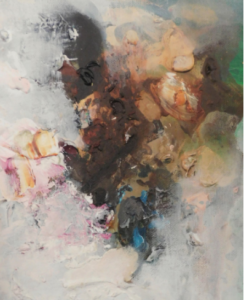Posted by Katherine Zito, CNF Reader for Issue 4.1
Reading, for many people, is about escape. That’s probably the reason I’d have given you if you’d asked me why I loved to read when I was a little girl, slyly (or so I thought) turning the pages of a novel underneath my desk as my elementary school teachers droned on about fractions. But as I matured a little, I realized that wasn’t quite the case. It was fun to escape to fantastical locales or go on adventures I never would, but books were also a way to grapple with the world, not simply escape from it–to see the issues that I dealt with in my life and in my mind reflected in a way that helped me make sense of them. The characters I loved the most, as I grew into adolescence, weren’t aspirational larger-than-life heroes, but characters I could relate to. Adolescence is a time of identity-building, and literature is a place many teenagers turn to figure stuff out. It is for this reason that diversity–in representations of race, gender, LGBT-status, disability, mental illness, and other ranges of experience–in young adult fiction is so vitally important.
In my eyes, the purpose of storytelling was grander than mere entertainment, and it wasn’t until I came across the words of writer Junot Diaz that I understood, clearly and powerfully, the importance of diverse stories: “There’s this idea that monsters don’t have reflections in a mirror. And what I’ve always thought isn’t that monsters don’t have reflections in a mirror. It’s that if you want to make a human being into a monster, deny them, at the cultural level, any reflection of themselves. And growing up, I felt like a monster in some ways. I didn’t see myself reflected at all. I was like, ‘Yo, is something wrong with me? That the whole society seems to think that people like me don’t exist?’ And part of what inspired me, was this deep desire that before I died, I would make a couple of mirrors. That I would make some mirrors so that kids like me might seem themselves reflected back and might not feel so monstrous for it.” Continue reading →
was grander than mere entertainment, and it wasn’t until I came across the words of writer Junot Diaz that I understood, clearly and powerfully, the importance of diverse stories: “There’s this idea that monsters don’t have reflections in a mirror. And what I’ve always thought isn’t that monsters don’t have reflections in a mirror. It’s that if you want to make a human being into a monster, deny them, at the cultural level, any reflection of themselves. And growing up, I felt like a monster in some ways. I didn’t see myself reflected at all. I was like, ‘Yo, is something wrong with me? That the whole society seems to think that people like me don’t exist?’ And part of what inspired me, was this deep desire that before I died, I would make a couple of mirrors. That I would make some mirrors so that kids like me might seem themselves reflected back and might not feel so monstrous for it.” Continue reading →
 Alice Mattison writes: “Writing about people from any marginalized group can be scary. It’s also bad for your imagination to put limits on it. You ought to be free to become anyone when you make up a story” [sic] (74). This raises an age-old question: should non-queer people write about the LGBTQ+ community? If you asked fourteen-year-old, newly out Charlie, the answer would have been a hard “no!” Back then every queer person I saw on T.V. or in books were always written the same—as a gay, not a person. The only time I ever saw someone like me not as a stereotype was when I saw or read something written by another queer person. Continue reading
Alice Mattison writes: “Writing about people from any marginalized group can be scary. It’s also bad for your imagination to put limits on it. You ought to be free to become anyone when you make up a story” [sic] (74). This raises an age-old question: should non-queer people write about the LGBTQ+ community? If you asked fourteen-year-old, newly out Charlie, the answer would have been a hard “no!” Back then every queer person I saw on T.V. or in books were always written the same—as a gay, not a person. The only time I ever saw someone like me not as a stereotype was when I saw or read something written by another queer person. Continue reading 



 was grander than mere entertainment, and it wasn’t until I came across the words of writer Junot Diaz that I understood, clearly and powerfully, the importance of diverse stories: “
was grander than mere entertainment, and it wasn’t until I came across the words of writer Junot Diaz that I understood, clearly and powerfully, the importance of diverse stories: “